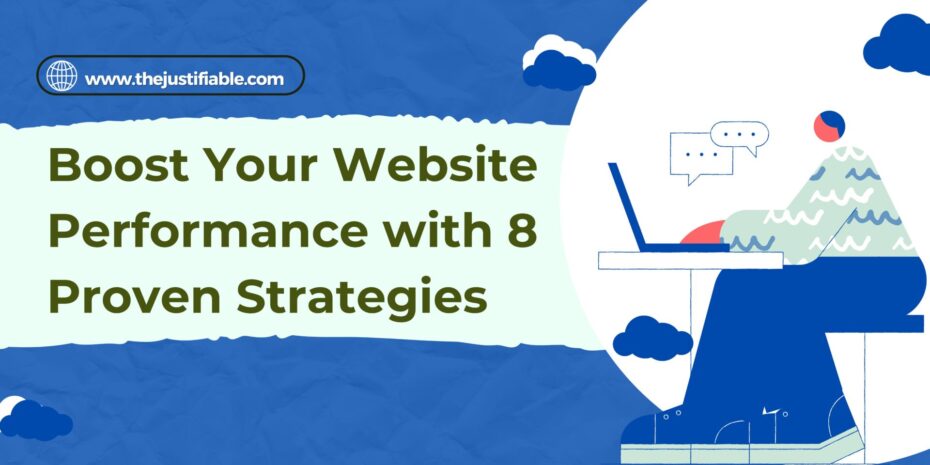Table of Contents
Website performance—how often do you think about it as the heartbeat of your online presence? Is your site living up to its full potential, or could it be leaving visitors wanting more? In a digital landscape where every second counts, ensuring your website operates at peak performance is not just advisable; it’s essential.
Whether you’re aiming to improve load times, enhance user experience, or secure your platform against threats, understanding the pivotal role of website performance is your first step towards creating a more engaging and effective online space.
Why should enhancing your website’s performance be at the top of your priority list? Because it’s directly tied to user satisfaction, search engine rankings, and ultimately, your site’s success. From optimizing for mobile users to leveraging the latest in SEO strategies, every improvement you make contributes to a stronger, more resilient online presence.
As we dive into these proven strategies, remember that elevating your site is about more than just speed and efficiency—it’s about crafting an online experience that resonates with your audience, encouraging them to return time and again.
1. Leverage Speed: The 60% Increase Strategy
Did you know that a one-second delay in page load time can lead to a 7% reduction in conversions? In the fast-paced world of the internet, website speed isn’t just a technical detail; it’s a critical component of website performance that directly influences user satisfaction, engagement, and conversion rates. By prioritizing speed, businesses can unlock a powerful avenue to outpace competitors and captivate their audience’s attention from the first click.
Speed optimization goes beyond just trimming down load times; it’s about enhancing the overall user experience. A fast-loading site reflects professionalism, efficiency, and respect for the user’s time, qualities that are highly valued in the digital space. As users grow more accustomed to instantaneity, the patience for sluggish websites is rapidly diminishing, making speed an indispensable element of website performance.
Investing in speed optimization is not just about meeting expectations; it’s about exceeding them. A site that loads quickly on all devices sets the stage for a smooth, enjoyable browsing experience that encourages visitors to explore further, engage more deeply, and convert more readily. This proactive approach to website performance can significantly boost your site’s visibility, drive more traffic, and increase user retention.
Moreover, speed is a key factor considered by search engines when ranking websites. A fast-loading website is more likely to achieve higher rankings in search results, increasing its visibility to potential visitors.
Understanding the Impact of Loading Times
The impact of loading times on website performance cannot be overstated. In a world where every second counts, even a minor delay can lead to lost visitors, decreased engagement, and a significant drop in conversion rates. Users expect websites to load almost instantaneously, and failing to meet these expectations can be costly for businesses.
Loading times also play a crucial role in shaping the first impression of your site. A swift, seamless load sets a positive tone for the user’s journey, conveying efficiency and reliability. Conversely, a slow-loading page can frustrate users, prompting them to abandon the site before they’ve even had a chance to explore what you have to offer. This initial experience can deeply influence their perception of your brand and their likelihood to return.
Furthermore, the impact of loading times extends to mobile users, who often face varying network speeds and conditions. Optimizing your site for quick loading across all devices and connections is essential for reaching a broader audience and ensuring a consistent, quality experience for every user. Catering to the mobile audience is particularly critical, as mobile browsing continues to rise in popularity.
Essential Tools to Measure Website Speed
To effectively optimize website speed, it’s crucial to have the right tools at your disposal. These tools not only help identify the current performance levels of your site but also uncover areas for improvement. Google’s PageSpeed Insights is a popular choice, providing detailed reports on both mobile and desktop performance, along with actionable recommendations for enhancement.
Another invaluable resource is GTmetrix, which offers a comprehensive analysis of your site’s loading times, performance scores, and optimization opportunities. By evaluating various performance metrics, GTmetrix helps pinpoint specific issues that could be slowing down your site, from large images to inefficient code.
WebPageTest is yet another tool that offers detailed insights into your website’s performance across different browsers and locations. This global perspective is essential for businesses aiming to reach an international audience, ensuring that their site delivers optimal speed and user experience worldwide.
Utilizing these tools to regularly monitor and measure your website’s speed is key to maintaining and improving its performance. By adopting a proactive approach to speed optimization, you can ensure that your site remains fast, efficient, and ahead of the curve, providing a superior browsing experience that attracts and retains users.
2. Optimize for Mobile: A 70% User Preference
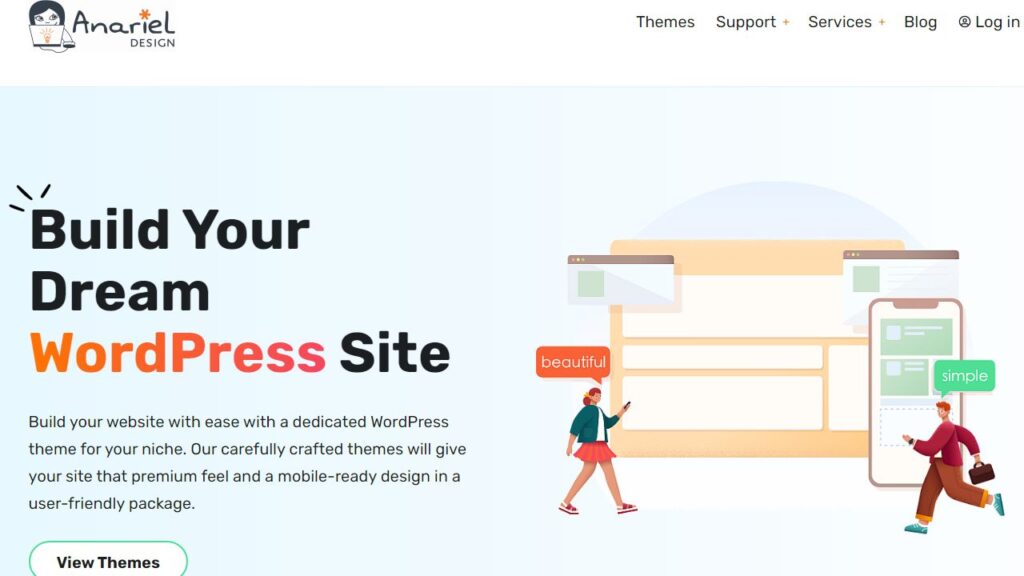
“Mobile is not the future, it is the now. Meet your customers in the environment of their choice, not where it’s convenient for you.” This quote underscores the undeniable shift towards mobile browsing, which has become the primary way people access the internet today. With over 70% of web traffic coming from mobile devices, optimizing for mobile isn’t just a recommendation; it’s a necessity for enhancing website performance and catering to user preferences.
Mobile optimization ensures that your site is not only accessible but also provides an optimal experience on smaller screens. This involves designing your website to load quickly, display properly, and be easy to navigate on a variety of devices. Users on mobile devices expect a seamless experience, similar to what they would get on a desktop, but tailored to the unique constraints and capabilities of their devices.
Adapting to mobile preferences means more than just making your site responsive. It’s about considering the entire user journey on mobile, from the initial load to the final conversion. Factors like touch-friendly navigation, readable font sizes, and accessible calls to action all play into how effectively your site performs on mobile devices. By prioritizing these elements, you’re not just optimizing for speed and aesthetics; you’re enhancing the overall user experience.
Moreover, Google has made mobile-friendliness a ranking factor in its search algorithms, which means that mobile optimization is also essential for SEO. Websites that offer a superior mobile experience are more likely to rank higher in search results, increasing their visibility to potential visitors. This alignment of user experience with SEO best practices highlights the importance of mobile optimization in today’s digital landscape.
The Importance of Mobile-First Design
“Start with the small screen first, then expand its features and content for the bigger screens.” Mobile-first design is a strategy that prioritizes the mobile experience above all else, acknowledging the predominance of mobile usage in accessing the web. This approach is crucial because it forces designers and developers to focus on the core content and functionality that users need, ensuring that the website is efficient, accessible, and engaging on the devices most people use.
Mobile-first design is not just about technical optimization; it’s about adopting a user-centric philosophy. By designing for mobile from the outset, you ensure that your website serves the widest possible audience effectively. This approach helps in creating a streamlined, focused experience that resonates with users, encouraging engagement and retention.
Implementing a mobile-first strategy also prepares your website for the future. As new devices and browsing methods emerge, a foundation that prioritizes mobile usability can more easily adapt to upcoming trends and technologies. This forward-thinking approach ensures that your website remains relevant and effective in the ever-evolving digital landscape.
Furthermore, mobile-first design enhances your site’s SEO. Since search engines prioritize mobile-friendly websites, starting with a mobile-first approach ensures that your site aligns with these search engine preferences from the beginning. This strategic alignment not only improves your site’s search engine ranking but also amplifies its reach and impact.
Techniques for Responsive Web Development
Responsive web development is the practice of creating websites that adapt seamlessly to different screen sizes and devices. This technique employs flexible layouts, images, and cascading style sheet (CSS) media queries to ensure that the website automatically adjusts to provide the best possible viewing experience for the user, regardless of device.
One key technique in responsive design is the use of fluid grid layouts. These grids use percentages rather than fixed units like pixels, allowing the layout to expand or contract based on the screen size. This flexibility is crucial for creating a website that looks great and functions well on a wide range of devices, from smartphones to desktops.
Another important aspect of responsive web development is the implementation of responsive images. This involves ensuring that images not only resize in proportion to the rest of the site but also that the appropriate image size is delivered based on the user’s device. This not only improves loading times on mobile devices but also conserves data usage for mobile users.
Lastly, effective responsive design incorporates CSS media queries, which allow the website’s style to change based on the characteristics of the device it’s being viewed on. By using media queries, developers can create a more personalized, responsive experience, ensuring that the site is as user-friendly on a mobile phone as it is on a large desktop monitor.
3. Enhance User Experience (UX) for 65% Better Engagement
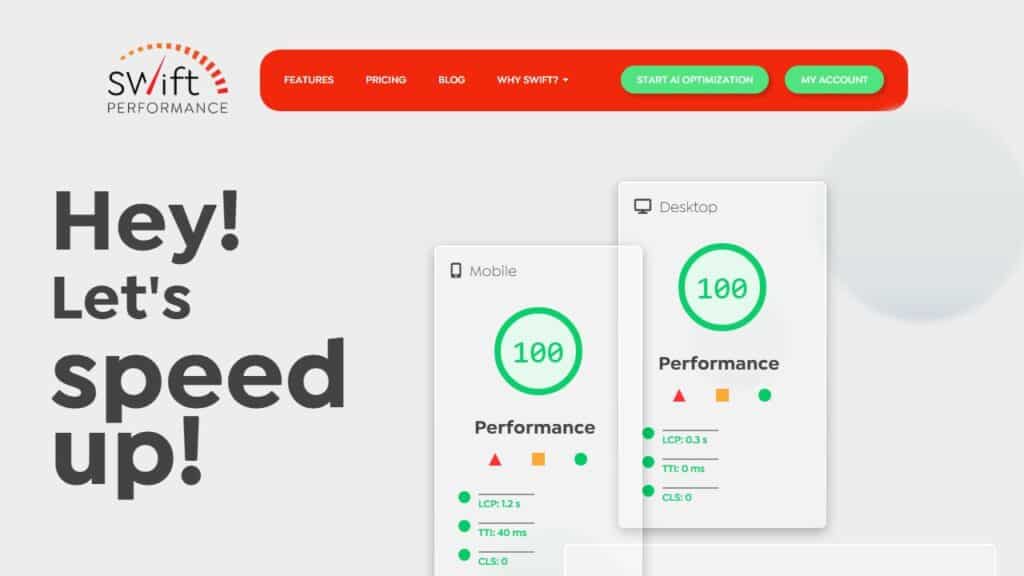
Just as a warm and inviting storefront attracts more customers, a website with an enhanced user experience (UX) draws in and retains visitors, potentially boosting engagement by up to 65%. This comparison highlights the importance of UX in the digital world, where the ease of navigation, aesthetic appeal, and overall functionality of a website can significantly influence visitor interactions and satisfaction.
Integrating UX design principles into your website performance strategy is not just about aesthetics; it’s about creating an environment where users feel understood and valued.
Improving UX begins with understanding your users’ needs and behaviors. This involves conducting user research, gathering feedback, and analyzing how visitors interact with your site. By identifying pain points and areas for improvement, you can implement targeted changes that enhance the overall user experience.
Whether it’s simplifying the navigation menu, speeding up page load times, or making forms more intuitive, each adjustment contributes to a smoother, more engaging user journey.
Accessibility is another critical component of UX design. Ensuring that your website is accessible to people with disabilities not only broadens your audience but also reflects a commitment to inclusivity.
This can involve incorporating alternative text for images, ensuring keyboard navigation is possible, and using color contrasts that accommodate visual impairments. By prioritizing accessibility, you’re enhancing the user experience for everyone, which can lead to increased engagement and loyalty.
Finally, mobile responsiveness plays a pivotal role in UX. With the majority of users accessing the internet via mobile devices, a mobile-friendly website is no longer optional. A responsive design that adjusts to various screen sizes and orientations is crucial for keeping mobile users engaged.
This means optimizing images, utilizing flexible grid layouts, and ensuring touch-friendly interfaces. By enhancing the mobile UX, you’re catering to the needs and preferences of a vast segment of your audience, thereby boosting engagement and performance.
Key UX Elements That Drive Performance
At the heart of a high-performing website are key UX elements that together create a seamless and enjoyable user experience. These elements include a clear and intuitive navigation system, fast loading times, responsive design, and interactive feedback. Navigation should be straightforward, allowing users to find what they’re looking for with minimal effort. This not only improves usability but also contributes to positive impressions and increased time spent on the site.
Content readability is another crucial element. The use of headings, subheadings, bullet points, and short paragraphs can significantly enhance the readability of your website, making it easier for users to digest information. Pairing this with compelling visuals and a cohesive color scheme can further engage users, encouraging them to explore more of your site.
Feedback mechanisms, such as contact forms, chatbots, and surveys, are essential for fostering interaction and gathering insights into user preferences and experiences. These tools not only facilitate communication but also demonstrate that you value user feedback, which can enhance trust and loyalty.
Lastly, consistency in design and functionality across all pages reinforces brand identity and ensures a fluid user experience. This consistency helps users become familiar with your site’s layout and functionality, reducing confusion and frustration. By focusing on these key UX elements, you can drive better engagement, reduce bounce rates, and ultimately improve website performance.
Conducting Effective UX Audits
Conducting a UX audit is a critical step in identifying areas for improvement and enhancing your website’s performance. This process involves a comprehensive review of your site’s usability, accessibility, and overall user experience. Starting with a clear set of objectives, such as increasing conversion rates or reducing bounce rates, allows you to focus your audit on specific aspects of UX that directly impact your goals.
Using a combination of analytics tools and user feedback, you can gather valuable data on how visitors interact with your site. Heatmaps, session recordings, and bounce rate analytics provide insights into user behavior, highlighting elements that work well and those that may cause confusion or frustration.
Involving a diverse group of users in usability testing can offer a fresh perspective on your site’s UX. This includes people from different backgrounds, ages, and levels of tech-savviness. Their feedback can uncover issues you might not have considered, providing a more holistic view of your site’s user experience.
Finally, prioritizing the findings from your UX audit and creating an actionable plan is essential for effective improvement. This plan should outline the steps needed to address identified issues, along with timelines and responsible parties. Regularly reviewing and updating your UX strategy based on ongoing audits and feedback ensures that your website continues to meet and exceed user expectations, driving better engagement and performance.
4. Implement SEO Best Practices for 80% Visibility Boost
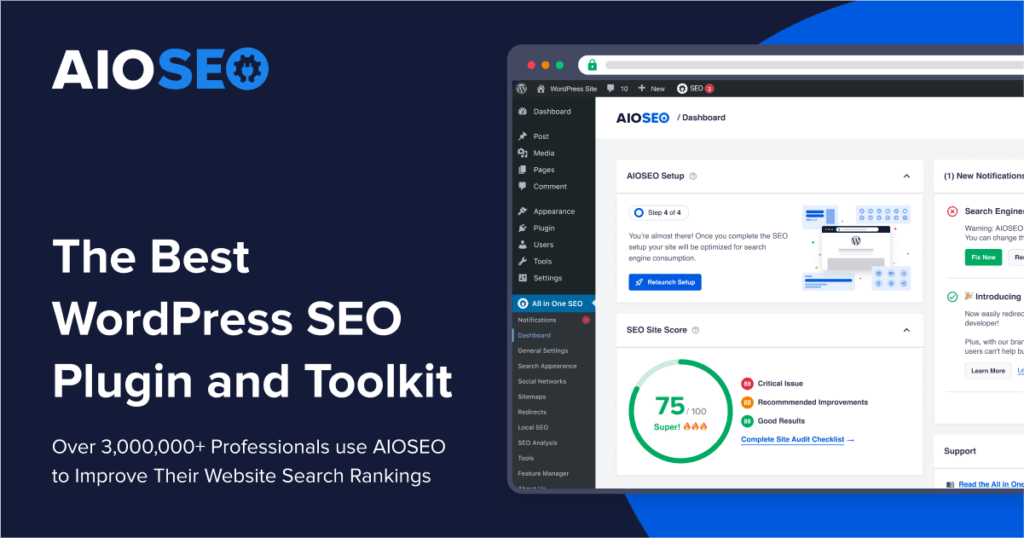
While it’s true that paid advertising and social media can increase your website’s visibility, implementing SEO best practices has proven to drive an unparalleled 80% boost in visibility for many websites. This immense potential makes SEO an essential strategy for any business looking to enhance its online presence. By optimizing your site for search engines, you not only improve its ranking but also enhance the user experience, making your site more accessible and engaging for your target audience.
Understanding and applying the fundamentals of SEO, such as keyword research, meta tags optimization, and creating quality content, can significantly impact your website’s performance. By identifying and using the right keywords, you make it easier for search engines to understand and index your content, increasing the chances of your site appearing in top search results. Moreover, meta tags like titles and descriptions play a critical role in attracting clicks from potential visitors browsing through search results.
Link-building, another cornerstone of SEO, enhances your site’s authority and relevance. By acquiring backlinks from reputable sites within your industry, you signal to search engines that your content is valuable and trustworthy. This not only boosts your search rankings but also drives organic traffic to your site. Remember, the quality of backlinks often outweighs quantity, making it crucial to focus on building meaningful connections with authoritative websites.
On-Page SEO Techniques That Work
On-page SEO is the practice of optimizing individual web pages to rank higher and earn more relevant traffic in search engines. This involves both the content and the HTML source code of a page that can be optimized. Effective on-page SEO starts with high-quality, relevant content that addresses the needs and questions of your audience.
Ensuring that your content is informative, engaging, and provides value is paramount. Including targeted keywords naturally within your text helps search engines understand and rank your pages more effectively.
Title tags and meta descriptions are vital components of on-page SEO. These elements provide search engines and users with a concise summary of what your page is about. Crafting compelling titles and descriptions can significantly improve click-through rates from search engine results pages (SERPs). It’s important to include relevant keywords in these tags, but always in a way that feels natural and provides value to the reader.
Header tags (H1, H2, H3, etc.) play a crucial role in structuring your content for both readability and SEO. Using headers to organize content makes it easier for readers to navigate your page and for search engines to grasp the main topics of your content. This hierarchical structure also emphasizes key sections and keywords, boosting your page’s SEO performance.
Internal linking is another effective on-page SEO technique. By linking to other pages on your site, you help search engines discover more of your content and understand the relationships between different pages. This not only aids in site navigation for users but also spreads link equity (ranking power) throughout your site, enhancing the SEO value of individual pages. Strategic internal linking encourages longer visitor sessions, reducing bounce rates and further signaling the quality of your website to search engines.
The Role of Content in SEO
Content is often referred to as the king in the world of SEO, and for good reason. High-quality, relevant content is the cornerstone of any successful SEO strategy. It attracts search engines and engages readers, driving traffic and conversions. Creating content that answers the questions and meets the needs of your target audience can establish your site as an authority in your field, leading to higher search rankings and increased visibility.
Keyword research is fundamental to creating SEO-friendly content. It involves identifying the terms and phrases your target audience uses when searching for information related to your products, services, or industry. Incorporating these keywords into your content helps search engines match your pages with relevant queries. However, it’s crucial to use keywords naturally and avoid overstuffing, as this can negatively impact your SEO efforts and user experience.
The freshness of content also plays a significant role in SEO. Regularly updating your website with new, relevant content can signal to search engines that your site is current and providing value to users. This can encourage more frequent indexing and improve your site’s chances of ranking higher in search results. Whether it’s updating existing articles, publishing new blog posts, or adding case studies, keeping your content fresh is key to maintaining and improving your SEO performance.
Lastly, the format and presentation of your content can significantly affect its SEO effectiveness. Using a clear and logical structure, incorporating multimedia elements like images and videos, and ensuring your content is mobile-friendly are all important factors. These elements not only improve the user experience but also contribute to higher engagement rates, longer dwell times, and ultimately, better search rankings.
5. Secure Your Site: A Must for 90% of Users
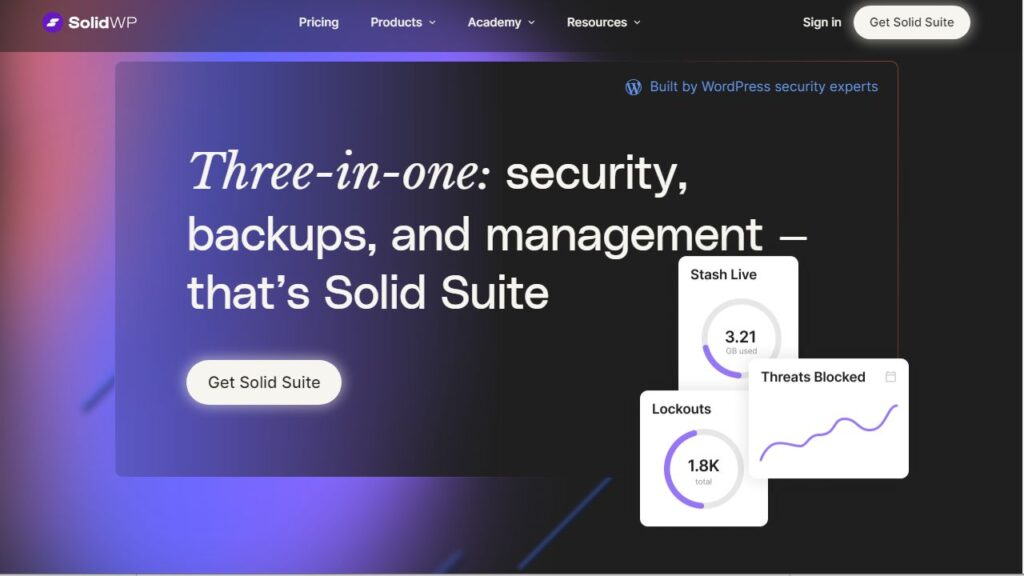
Surprisingly, a staggering 90% of internet users express significant concerns about website security, indicating a universal demand for safe browsing experiences. This overwhelming majority showcases the critical importance of implementing robust security measures on your website. Not only does a secure site protect sensitive user information, but it also builds trust with your audience, enhancing their overall engagement and loyalty. In today’s digital landscape, neglecting website security can severely damage your brand’s reputation and user trust.
Implementing HTTPS through an SSL certificate is the first step in securing your website. This encrypts data transmitted between your site and its users, safeguarding against interceptions and data breaches. Websites without this layer of encryption not only deter visitors but also face penalties from search engines, including lower rankings. Visitors often look for the padlock symbol in their browser’s address bar as a sign of security before proceeding with any transactions, highlighting the necessity of this protocol.
Beyond encryption, regular security audits are essential to identify and rectify vulnerabilities within your website. These audits should encompass all aspects of your site, from its codebase to third-party services it integrates with. Regular updates and patches to your CMS, plugins, and scripts are critical to prevent exploitation by malicious actors. It’s also wise to employ a web application firewall (WAF) to further defend against common threats such as SQL injection and cross-site scripting (XSS) attacks.
Educating your users on safe browsing practices and the security measures you’ve implemented can further bolster trust. Transparency about data handling and privacy policies not only complies with legal standards but also reassures visitors of their safety on your site. Providing users with tips on creating strong passwords and spotting phishing attempts can empower them to contribute to the overall security of their online interactions.
Essential Security Protocols for Trust
The foundation of a trusted online environment lies in the adoption of essential security protocols. Implementing these protocols not only guards against data breaches and cyber-attacks but also significantly boosts user confidence. For instance, the Secure Sockets Layer (SSL) certificate is non-negotiable for any site that handles personal information. This protocol encrypts data in transit, making it nearly impossible for hackers to decipher sensitive information such as credit card numbers or login credentials.
Two-factor authentication (2FA) adds an additional layer of security, requiring users to verify their identity through two distinct methods before gaining access. This could include a combination of passwords, security tokens, or biometric verification. By integrating 2FA, websites significantly lower the risk of unauthorized access, providing a safer experience for users. This method has become a standard for online banking, shopping, and even social media platforms, reflecting its importance in the current digital era.
Regular software updates and patches are also crucial components of a robust security strategy. Cyber threats evolve rapidly, and software developers continuously release updates to address vulnerabilities. Staying current with these updates is vital to protecting your website and its visitors from emerging threats. Neglecting this aspect can leave your site exposed to attacks that exploit known vulnerabilities, which could have been easily prevented with timely updates.
Finally, employing a comprehensive backup strategy ensures that your website can recover quickly from any security incident. Regular backups not only minimize data loss in the event of a breach but also enable a faster restoration of services, reducing downtime. This resilience to attacks not only protects your website’s integrity but also maintains user trust by demonstrating your commitment to their security and your ability to rapidly respond to and mitigate potential threats.
Regular Maintenance to Prevent Breaches
Regular maintenance is pivotal in preventing security breaches and ensuring a safe online experience for users. It might come as a surprise, but many website attacks exploit outdated software and known vulnerabilities, which can be easily avoided with consistent upkeep. This maintenance includes updating the core website platform, plugins, and scripts to their latest versions, which often contain security enhancements and vulnerability patches.
Monitoring your website for unusual activity is also a crucial aspect of maintenance. Implementing security plugins or services that alert you to suspicious behavior can help you act swiftly before any significant damage occurs. These tools can detect a range of issues, from attempted security breaches to malware infections, ensuring that you’re always one step ahead of potential threats.
Educating your team about the latest cybersecurity threats and safe practices is another essential element of maintenance. Cybersecurity is not just the responsibility of IT professionals; anyone who interacts with your website can potentially introduce vulnerabilities. Regular training sessions can help create a culture of security awareness within your organization, significantly reducing the risk of accidental breaches.
Lastly, conducting regular security audits and penetration tests can uncover hidden vulnerabilities in your website’s infrastructure. These proactive assessments simulate cyber-attacks to identify weaknesses in your security posture, allowing you to address them before they can be exploited by malicious actors.
6. Utilize CDN for 50% Faster Global Access
An interesting fact that underscores the importance of a Content Delivery Network (CDN) is its ability to boost website loading times by up to 50% for users worldwide. This remarkable improvement in speed can significantly enhance user experience, reduce bounce rates, and improve SEO rankings. CDNs achieve this by caching content in multiple locations around the world, ensuring that users access data from the nearest server, thus minimizing delays.
CDNs not only accelerate content delivery but also enhance website reliability and scalability. By distributing the load across multiple servers, they can handle traffic spikes more efficiently than a single host server. This means that during periods of high traffic, your website remains accessible and performs consistently, providing a smooth experience for all visitors. This resilience is crucial for maintaining your online presence and ensuring that your audience can always access your content without interruption.
Another key benefit of using a CDN is the reduction in bandwidth costs. By caching and delivering content from edge servers closer to the user, the amount of data transferred from the origin server decreases significantly. This can lead to substantial savings on bandwidth costs, especially for websites with high traffic volumes or those hosting large files like videos and high-resolution images. Additionally, CDNs often provide security benefits, such as DDoS protection and security certificates, further safeguarding your site from online threats.
Choosing the right CDN provider is essential for maximizing these benefits. Factors to consider include geographic coverage, cost, ease of integration, and additional services such as security features and analytics. The ideal CDN should align with your website’s specific needs and user demographics, ensuring optimal performance and security.
How CDNs Improve Website Performance
Content Delivery Networks (CDNs) are pivotal in enhancing website performance by drastically reducing latency, which is the delay before a transfer of data begins following an instruction for its transfer. By caching content in strategic locations around the globe, CDNs ensure that users receive data from the nearest server. This proximity significantly speeds up the loading times of web pages, images, and videos, directly contributing to a smoother and more enjoyable user experience. Faster website performance is known to positively impact user satisfaction, engagement, and conversion rates, making CDNs an invaluable asset for online businesses.
Beyond improving loading times, CDNs can dramatically increase a website’s capacity to handle simultaneous requests. This scalability is crucial for websites experiencing sudden surges in traffic, such as during promotions, product launches, or viral content. By efficiently distributing these requests across multiple servers, CDNs prevent the overload of any single server, ensuring consistent website performance even under heavy load. This aspect of CDNs is particularly beneficial for maintaining high availability and minimizing the risk of website downtime.
CDNs also play a significant role in enhancing website security. They often come equipped with features designed to protect against DDoS attacks, data breaches, and other cyber threats. By serving as a buffer between the origin server and the end-users, CDNs can effectively mitigate malicious traffic and prevent it from reaching the core of your website’s infrastructure. This added layer of security is crucial for protecting sensitive user data and maintaining trust with your audience.
Furthermore, the global network of servers utilized by CDNs can offer insights into traffic patterns, helping website owners optimize their content delivery strategies. Analytics provided by CDNs can reveal user demographics, device usage, content popularity, and more, enabling data-driven decisions that further enhance website performance and user experience.
Selecting the Right CDN for Your Website
Choosing the appropriate CDN for your website involves considering several key factors to ensure you maximize performance, security, and cost-efficiency. The geographical distribution of your audience plays a crucial role; selecting a CDN with a strong presence in regions where your users are located can significantly improve loading times and overall user experience. This is because the closer the CDN’s servers are to your users, the faster the content delivery will be.
Another important consideration is the type of content you’re delivering. For websites that host video streaming, large files, or high-resolution images, it’s essential to choose a CDN that specializes in handling such data efficiently. These CDNs are optimized for streaming and can manage large volumes of data without compromising on speed or quality, ensuring that your users enjoy a seamless viewing experience.
Cost is always a critical factor when selecting a CDN. Pricing models can vary widely among providers, with some offering pay-as-you-go plans while others may require a monthly subscription. It’s important to assess your website’s traffic patterns and content delivery needs to choose a plan that offers the best value. Additionally, some CDNs offer additional services like security enhancements and analytics, which can provide added value but may also influence the overall cost.
Lastly, ease of integration and technical support are essential for smoothly incorporating a CDN into your website’s infrastructure. A CDN that offers straightforward setup procedures, comprehensive documentation, and responsive customer support can significantly reduce the complexity of deploying and managing the service. This support is invaluable, especially during the initial setup phase or when troubleshooting any issues that may arise.
7. Leverage Browser Caching for Instant Load Times
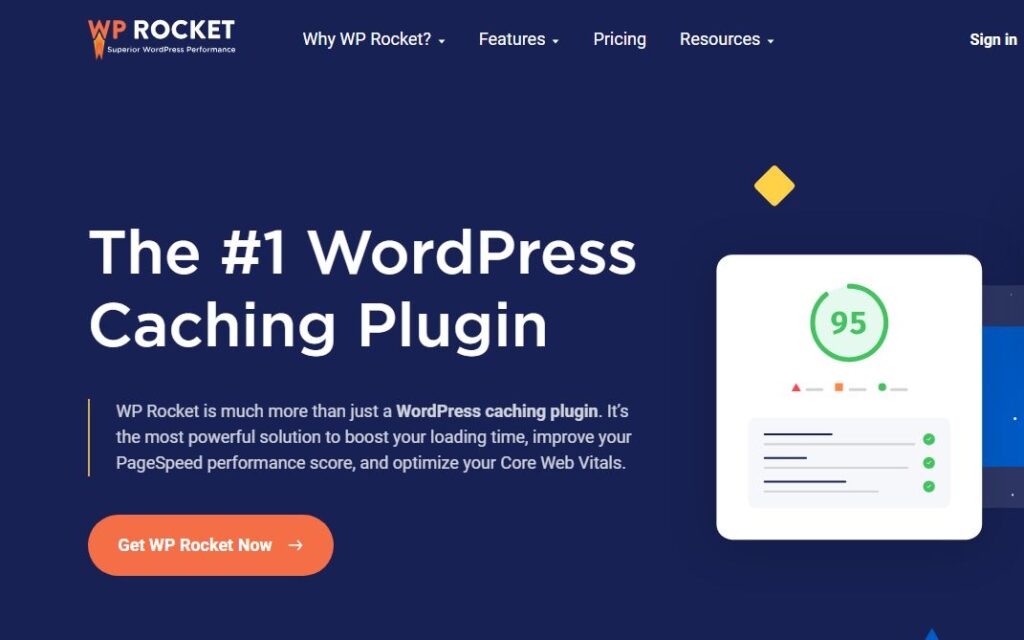
The magic behind instant web page load times often lies in a technique known as browser caching. This approach allows frequently accessed web resources, like images, JavaScript files, and stylesheets, to be stored locally on a visitor’s computer.
Consequently, when users revisit your site, their browsers can load the page using these stored resources rather than fetching them all over again from the server. This not only speeds up the loading process significantly but also enhances the user experience and reduces server load.
Browser caching is a powerful tool in the web developer’s arsenal for improving website performance. By understanding and utilizing this technique, you can ensure that your site’s return visitors enjoy faster loading times. This is particularly important in today’s fast-paced digital environment, where speed is often a critical factor in retaining users’ attention and reducing bounce rates.
Implementing browser caching correctly can lead to noticeable improvements in website speed, directly contributing to better engagement metrics and potentially higher search engine rankings.
Implementing browser caching involves specifying which files should be stored locally and for how long. This is typically done through HTTP headers that instruct the browser on the caching policies for various resources. Effective caching strategies can differentiate between frequently updated content, which might require more frequent refreshes, and static resources that change infrequently. By fine-tuning these settings, webmasters can strike the perfect balance between minimizing load times and ensuring content freshness.
Moreover, leveraging browser caching is not only about enhancing user experience but also about being considerate of your users’ bandwidth. For individuals on limited or slow internet connections, caching can make a substantial difference in how they experience the web.
The Basics of Browser Caching
Browser caching, at its core, is a technique that stores a copy of files downloaded by your browser to display websites. These files can include HTML documents, CSS stylesheets, JavaScript files, and images. When a user revisits a website, the browser can retrieve these files from its cache rather than downloading them from the web server again. This process significantly reduces loading times, making websites appear almost instantly for repeat visitors.
Understanding how browser caching works is crucial for developers looking to optimize their websites. The process is governed by cache-control policies, which are set on the web server. These policies determine which files are cached and for how long, guiding browsers on the optimal way to store and retrieve cached resources. By configuring these settings thoughtfully, developers can ensure that users experience quick load times while still receiving the most up-to-date content.
To leverage browser caching effectively, it’s important to recognize the types of resources that benefit most from being cached. Static resources like logos, CSS, and JavaScript libraries, which change infrequently, are ideal candidates for long-term caching. In contrast, dynamic content, such as user-specific information or news articles, might need more careful consideration to prevent serving outdated content. Striking the right balance is key to harnessing the full potential of browser caching.
Implementing browser caching can seem daunting, but modern web development tools and platforms often offer straightforward ways to manage caching policies. For instance, configuring .htaccess files on Apache servers or using plugins and extensions on content management systems can simplify the process.
Implementing Effective Caching Strategies
Developing an effective caching strategy is essential for maximizing the benefits of browser caching. The cornerstone of a successful strategy is the differentiation between static and dynamic content. Static content, which does not change frequently, can be cached for longer periods, reducing load times for repeat visitors. Dynamic content, on the other hand, requires more nuanced caching policies to ensure that users always access the most current information.
One effective approach is to leverage versioning for static assets. By appending a version number or hash to file names, you can force browsers to download updated versions of the files when they change, while still benefiting from caching for unchanged resources. This technique ensures that users are not stuck with outdated content due to overly aggressive caching, while still enjoying the speed benefits for resources that haven’t changed.
Another key aspect of implementing effective caching strategies is the use of cache validation. This involves configuring your server to use HTTP headers that allow browsers to check if the cached version of a file is still valid. If the file has not changed since it was last cached, the server can respond with a 304 Not Modified status, telling the browser to use the cached version. This process minimizes data transfer for unchanged resources, further speeding up the loading process without sacrificing content freshness.
Lastly, understanding and using the scope of caching levels is crucial. While some resources are best cached by the browser, others might be suitable for caching at intermediary proxies or even by a content delivery network (CDN). This layered approach to caching can significantly enhance the speed and efficiency of content delivery, especially for websites with a global audience.
8. Regularly Update Content for 75% More Return Visits
Fascinatingly, websites that frequently update their content can see up to a 75% increase in return visits. This statistic underscores the critical importance of fresh, relevant content in engaging and retaining your audience. In today’s fast-paced digital landscape, users are constantly seeking new information and experiences. A website that consistently provides up-to-date content can become a go-to resource, encouraging users to return regularly.
Regular content updates serve multiple purposes beyond just attracting return visits. They also play a significant role in search engine optimization (SEO). Search engines like Google prioritize websites that offer fresh content, considering them more relevant and up-to-date for users. By updating your website regularly, you not only enhance user engagement but also improve your site’s visibility and ranking on search engine results pages (SERPs). This symbiotic relationship between content freshness and SEO effectiveness is a key strategy for increasing online visibility and attracting more traffic.
Moreover, regularly updating content keeps your website dynamic and interesting for your audience. It provides an opportunity to cover new trends, share insights, and address current events, making your site a dynamic source of information. This approach can help establish your brand as an authority in your field, building trust and credibility with your audience. As a result, users are more likely to engage with your content, share it on social media, and recommend your site to others, further increasing your reach and influence.
The Importance of Fresh Content
Fresh content is the cornerstone of a successful online presence. It’s what keeps users coming back for more, sets you apart from competitors, and enhances your website’s SEO. In an era where information becomes outdated rapidly, the ability to provide current and relevant content is invaluable. Websites that consistently offer fresh insights and timely updates are more likely to build a loyal audience and establish themselves as industry leaders.
The significance of fresh content extends beyond user engagement to directly impact your website’s search engine rankings. Search engines are designed to deliver the most relevant and up-to-date information to users. By regularly updating your content, you signal to these search engines that your site is an active and authoritative source of information. This not only helps in attracting new visitors but also in retaining them, as users are more inclined to return to websites where they can find the latest information and insights.
Fresh content also provides an excellent opportunity for keyword optimization, allowing you to target new search queries and trends. This ongoing process of content refreshment enables you to adapt your SEO strategy to the ever-changing search landscape, capturing traffic from emerging trends and topics. Additionally, consistently updated content encourages social sharing and backlinks, further amplifying your site’s reach and SEO performance.
Creating a schedule for regular content updates is crucial for maintaining momentum and keeping your audience engaged. This doesn’t necessarily mean daily updates but establishing a consistent rhythm that your users can anticipate. Whether it’s weekly blog posts, monthly newsletters, or quarterly industry reports, a regular update schedule can significantly enhance your website’s attractiveness and authority, fostering a stronger connection with your audience.
Planning Your Content Update Strategy
Developing a content update strategy is essential for ensuring your website remains relevant, engaging, and competitive. Start by conducting a content audit to identify which pages or posts are outdated, underperforming, or no longer relevant. This process helps prioritize your efforts, focusing on areas that will have the most significant impact on user engagement and SEO.
Next, consider the types of updates that will add the most value to your audience. This could include adding new sections to existing articles, updating statistics and references, or creating entirely new content that addresses emerging trends and questions. Understanding your audience’s needs and preferences is key to determining what updates will be most effective in drawing them back to your site.
It’s also important to integrate your content update strategy with your overall content marketing plan. This ensures that your efforts are aligned with your brand’s goals and messaging. Planning ahead and creating an editorial calendar can help you manage your content updates efficiently, ensuring a steady stream of fresh information that keeps users engaged and improves your SEO.
Finally, don’t overlook the power of promotion in your content update strategy. Whenever you update content, share it on social media, email newsletters, and other channels to inform your audience about the new information. This not only drives traffic to your updated content but also reinforces your commitment to providing valuable and current information.
Commit to Continuous Improvement
The journey toward optimizing your website is ongoing, a process where commitment to continuous improvement plays a pivotal role. This mindset is not just about tweaking your site for better performance today but evolving with the digital landscape to meet the demands of tomorrow. As technologies advance and user expectations shift, the willingness to adapt becomes the cornerstone of sustained success online.
Continuous improvement is about being proactive in your strategies, whether it’s enhancing site speed, updating content, or implementing the latest SEO practices. It involves regularly reviewing your website’s analytics to understand user behavior, identify areas for enhancement, and recognize emerging trends. By staying ahead of the curve, you ensure that your site remains relevant, engaging, and competitive, providing a superior user experience that fosters loyalty and growth.
Engaging with your community and gathering feedback is another critical aspect of this ongoing process. User feedback can offer invaluable insights into what works well and what needs refinement. Incorporating this feedback into your website’s evolution not only improves its functionality and content but also builds a stronger connection with your audience. This two-way communication channel reinforces the idea that your site is dynamic and responsive to user needs.
Lastly, committing to continuous improvement means investing in your website as a living entity that grows and changes over time. It’s about embracing innovation, learning from analytics, and always seeking ways to better serve your audience. This dedication not only enhances your website’s performance but also solidifies your brand’s position in the digital landscape.
Frequently Asked Questions (FAQ)
Why is website speed important for user experience?
Website speed is crucial because it directly impacts user satisfaction and engagement. Slow-loading sites frustrate users, leading to higher bounce rates and reduced conversions. Studies show that even a one-second delay can lead to a 7% reduction in conversions. Fast websites enhance the overall browsing experience, making visitors more likely to stay longer, explore more, and eventually convert.
How can I improve my website’s loading time?
Improving your website’s loading time can be achieved through various strategies. Start by optimizing images, leveraging browser caching, and reducing the size of CSS, HTML, and JavaScript files. Using a Content Delivery Network (CDN) to serve content closer to your users also significantly reduces load times. Regularly monitor your site’s performance with tools like Google PageSpeed Insights to identify and fix issues.
What tools can I use to measure website performance?
Several tools can help measure and analyze your website’s performance. Google PageSpeed Insights provides a comprehensive report on your site’s speed and offers actionable suggestions. GTmetrix offers in-depth performance analysis, including page load details and optimization tips. WebPageTest allows you to test your site from multiple locations worldwide, providing insights into global performance.
How does mobile optimization affect my website’s performance?
Mobile optimization is essential as over 70% of web traffic comes from mobile devices. A mobile-optimized site ensures fast loading times, easy navigation, and a user-friendly experience on smaller screens. Google also considers mobile-friendliness in its ranking algorithm, so a well-optimized mobile site can improve your visibility in search results.
What are the benefits of using a Content Delivery Network (CDN)?
A CDN improves your website’s performance by caching content on servers closer to the user’s location, reducing latency and load times. CDNs also enhance site reliability during traffic spikes and provide additional security features like DDoS protection. This results in a faster, more secure, and scalable website, improving user experience globally.
Why is regular content updating important for SEO?
Regular content updates signal to search engines that your site is active and relevant, which can improve your rankings. Fresh content keeps your audience engaged and encourages return visits. By updating your site with current information, you attract more traffic and stay competitive in search engine results.
How does user experience (UX) impact website performance?
User experience is a key factor in website performance as it influences how visitors interact with your site. A well-designed UX improves navigation, readability, and accessibility, leading to longer sessions, lower bounce rates, and higher conversion rates. Enhancing UX through clear navigation, responsive design, and fast load times is essential for retaining users and boosting site performance.
What are the key elements of on-page SEO?
Key elements of on-page SEO include optimizing title tags, meta descriptions, and header tags with relevant keywords. Ensuring your content is high-quality, relevant, and structured with clear headings also improves readability and SEO. Additionally, internal linking and using alt text for images enhance your site’s SEO by making it easier for search engines to index your content.
Why should I use HTTPS for my website?
Using HTTPS encrypts data transferred between your site and users, ensuring privacy and security. HTTPS is also a ranking factor for Google, meaning secure sites are more likely to rank higher in search results. Visitors trust HTTPS sites more, which can lead to increased conversions and lower bounce rates.
How can browser caching improve my website’s load time?
Browser caching improves load time by storing copies of your site’s resources (like images, CSS, and JavaScript) on the user’s device. When the user revisits your site, the browser loads these resources from the local cache rather than downloading them again, significantly speeding up the page load time.
What is mobile-first design, and why is it important?
Mobile-first design is a web development strategy that prioritizes mobile device usability before expanding to larger screens. This approach ensures that your site is highly accessible on mobile devices, which is crucial given the growing number of users accessing the web via smartphones. It also aligns with Google’s mobile-first indexing, improving your SEO.
How do I secure my website against cyber threats?
Securing your website involves several steps, including implementing HTTPS, regularly updating software, and using strong passwords. Employing a Web Application Firewall (WAF) and enabling two-factor authentication (2FA) can further protect against threats like SQL injections and unauthorized access. Regular security audits and monitoring for suspicious activity are also crucial.
What is a UX audit, and how can it improve my site?
A UX audit is a comprehensive review of your website’s user experience to identify usability issues and areas for improvement. It involves analyzing user behavior, gathering feedback, and testing various aspects of your site. Conducting a UX audit can lead to actionable insights that improve navigation, accessibility, and overall user satisfaction, ultimately boosting site performance.
How does internal linking affect SEO and site performance?
Internal linking helps search engines understand the structure and hierarchy of your site, making it easier to index. It also distributes ranking power across your site, helping less prominent pages gain visibility. For users, internal links improve navigation and encourage them to explore more content, leading to longer sessions and better engagement.
What role does content freshness play in user engagement?
Fresh content keeps users engaged by providing new, relevant information that meets their current needs. Regularly updated content also improves your site’s credibility and authority, making users more likely to return. From an SEO perspective, fresh content signals to search engines that your site is active, which can positively impact rankings.


